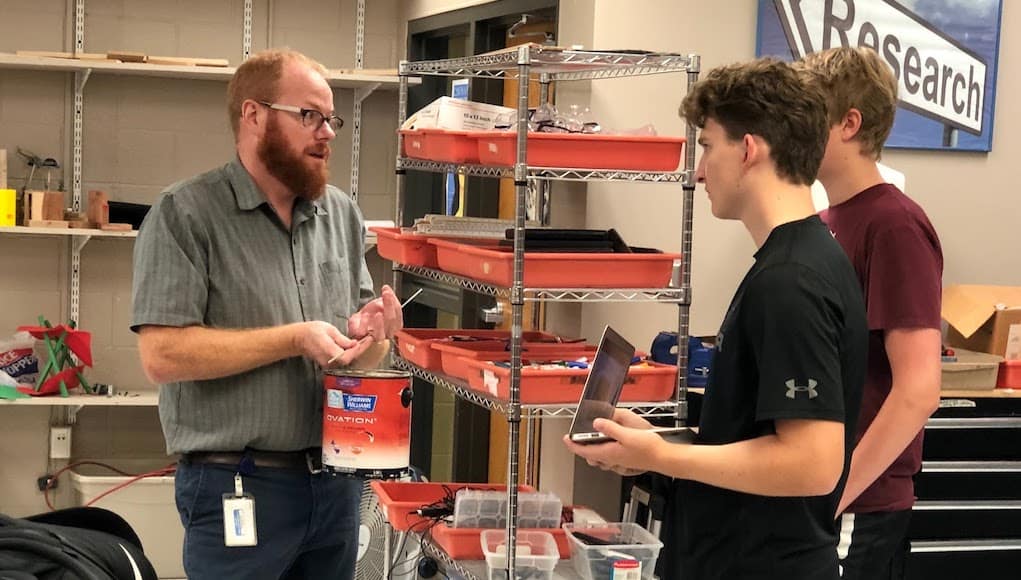Swap Algebra 2 for Data Science, Get a 1-Point Bump in GDP

I visited 20 high schools in the last 20 days. In every case, I saw kids suffering through the arcane symbol manipulation of Algebra 2, an obsolete requirement that keeps some youth out of meaningful employment and serves as a boat anchor on the American economy.
Now that everyone has powerful computers (like that smartphone in your hand), we should teach math as if computers existed.
Now that everyone is an entrepreneur, we should teach financial literacy (make it a graduation requirement like Missouri).
Now that we all use probabilities all day long in life, work, and leisure, we should teach statistics and probability.
Now that every field is computational, we should invite youth to attack big problems with big data sets (that’s called data science).
What we don’t need to teach is long division and factoring polynomials. The memorization of procedural computation that monopolizes math time in U.S. classrooms trips up most young people and discourages many from attending and completing a degree, and gaining meaningful employment.
Really, Kill Algebra 2? OK, Algebra 2 isn’t the only culprit, it’s the anachronistic American math sandwich of Algebra 1, Geometry and Algebra 2. There is some good and widely useful stuff in each course, but we could eradicate half of rule memorization and calculation and add more data science, and the outcome would be less painful and much more beneficial to young people.
Really, 1% of GDP? Preparing young people to succeed in the innovation economy with data science, probability and financial literacy has to be worth at least a point of Gross Domestic Product in the long run. Granted, we probably have to fix reading instruction and add some design thinking to fully realize a $200 billion boost to the economy, but I think it’s in the ballpark.
(Leading economist and Stanford University researcher Eric Hanushek has studied the correlations between traditional measures of achievement, particularly math, and economic growth. He cites a study that shows that one standard deviation difference on test performance is related to 1% difference in annual growth rates of GDP per capita. He also calculates that GDP growth rate would be boosted by about three-fourths of 1% a year if U.S. test scores in math equal Canadian achievement levels. The point is that getting math right appears to be a big deal for the economy.)
Is this really a problem?
With the push for more college going, nearly every state has boosted its math graduation requirements to at least three years. Most states provide some flexibility in what comprises those three courses, but because college entrance exams include a lot of Algebra 2, it’s a de facto graduation requirement—at least for youth that want to attempt college.
Common Core State Standards was an attempt to update American math standards. While some probability and data science was added, it left nearly all of the traditional symbol manipulation and calculation in place. It did offer an integrated approach that was an improvement over the traditional sequence, but there hasn’t been much of an update.
In addition to college entrance tests (ACT and SAT) that still have a lot of symbol manipulation, it’s the pesky placement exams (Accuplacer and Compass) that keep people out of credit-bearing community college math courses and, as a result, out of pathways to meaningful employment.
So, it’s a combination of state and local graduation requirements, state and national tests, and a century of tradition that has us stuck in a bad place—bad for kids and for the economy.
What the heck do you know?
Fair question. I’m a former engineer, public company finance exec, business school instructor, school administrator, venture investor, and policy advocate that has studied this for 25 years while visiting thousands of high schools—arguably more than most people will in their lifetimes. With apologies for the delay, I’m joining a parade of leaders ready to take on the tired traditions of math in America.
“The tragedy of high school math,” said venture investor and education advocate Ted Dintersmith (who has a Ph.D. in math modeling), “is that less than 20% of adults ever use algebra. No adult in America still does integrals and derivatives by hand—the calculus that blocks so many from career paths. It remains in the curriculum because it’s easy to test, not important to learn.”
“Put data and its analysis at the center of high school mathematics.” That’s the conclusion of Stanford math professor Jo Boaler and University of Chicago economist Steven Levitt. They recommend that “every high school student should graduate with an understanding of data, spreadsheets, and the difference between correlation and causality.”
The Center for Radical Innovation for Social Change (RISC) at the University of Chicago has produced a great presentation making the case for teaching data science in high school.
Last month, PISA released a mathematics framework that guides the assessments. Data literacy is central to the framework.
Rather than the plug and crank of symbol manipulation in our high school math, we should be teaching computational thinking. As mathematician Conrad Wolfram said, we should be teaching math as if computers existed. He argues that math should be taught as computational thinking and integrated across the curriculum.
Branching Out, a new report from nonprofit Just Equations, was a good attempt. They suggest dropping Algebra 2 for most students, while maintaining the traditional path for STEM-focused students. Other than a few math ‘monks,’ the STEM professions don’t require long division or factoring polynomials anymore than book editors. What everyone needs is success in using data to solve problems.
Math for making a living—and making a difference.
High school should be an opportunity to figure out who you are, what you’re good at, and where you want to make a contribution. That should start with problem finding—spotting big tough problems of interest. Next comes understanding the problem and variables associated—that’s algebraic reasoning. But rather than focusing on computation (including factoring those nasty polynomials), students should be building data sets and using computers to do what they’re good at: calculations. Add some finance and probability to guide the investment of time and resources, and you have a new, more compact set of math requirements for making a living and making a difference.
Want to join the parade? Boaler and Levitt need to hear from people who would like to see more relevant math instruction—and perhaps a one-point boost in GDP.
For more, see:
- Bad Bargain: Why We Still Ask Kids to Factor Polynomials and How We Fix It
- Advancing Computational Thinking Across K-12 Education
- Why Math and STEM Education is a Social Justice Issue
Stay in-the-know with innovations in learning by signing up for the weekly Smart Update.
This blog was originally published on Forbes.








0 Comments
Leave a Comment
Your email address will not be published. All fields are required.